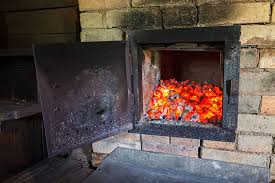Creosote Buildup: Types, Dangers, and Removal Techniques

Strong 8k brings an ultra-HD IPTV experience to your living room and your pocket.
When it comes to keeping your home safe and your fireplace efficient, one silent culprit often gets overlooked — creosote. If you use a wood-burning stove or fireplace in your Boston-area home, understanding creosote is crucial. This highly flammable substance can put your home and family at risk if not properly managed.
In this guide, we'll break down what creosote is, the different types, why it's dangerous, how to remove it, and how services like air duct cleaning in Boston often go hand-in-hand with chimney and vent system care.
What Is Creosote?
Creosote is a black or brown tar-like residue that forms when wood smoke condenses inside the chimney or flue. It builds up layer by layer as the smoke cools and sticks to the interior walls of the chimney.
Creosote is made up of:
Water vapor
Wood particles
Volatile gases
Organic compounds
It starts off as a flaky residue but can harden into a thick, glossy tar if not cleaned regularly — and that's when it becomes especially dangerous.
Types of Creosote
Creosote develops in three main stages (or types), and each stage is more hazardous and difficult to remove than the last.
Type 1: Flaky or Sooty Creosote
Light and dusty
Easy to brush away with standard chimney cleaning tools
Usually found in chimneys with good airflow and dry wood usage
Type 2: Crunchy or Tar-like Creosote
Appears as shiny, hardened flakes or chips
Thicker and harder than Type 1
Requires specialized brushes or scrapers for removal
Type 3: Glazed Creosote
Most dangerous and difficult to remove
Looks like a shiny, black glaze coating the inside of the flue
Requires professional removal, sometimes involving chemical treatments or high-powered rotary tools
Why Creosote Is Dangerous
Creosote is more than just a dirty residue. It's a fire hazard — and a serious one.
Fire Risk
Creosote is extremely flammable. Chimney fires caused by creosote buildup can reach temperatures of up to 2,000°F and can quickly spread to other parts of the home.
Health Concerns
Creosote emits harmful fumes when heated. Inhaling these fumes over time can lead to respiratory issues, skin irritation, and even long-term health problems if exposure is frequent.
Structural Damage
Creosote buildup can corrode the inner lining of your chimney, leading to cracks and leaks — which not only compromise the structure but allow dangerous gases like carbon monoxide to enter your home.
How to Remove Creosote
Depending on the type and amount of creosote buildup, removal techniques will vary.
1. Manual Brushing (Type 1)
A chimney sweep uses specialized brushes to scrape off loose and flaky creosote. This is usually done annually.
2. Rotary Cleaning (Type 2)
This method uses rotating tools to tackle harder deposits. It's more thorough than manual brushing and is effective for moderate buildup.
3. Chemical Creosote Removers
These are applied to glazed creosote to break it down chemically. It softens the creosote over time so it can be brushed away more easily.
4. Professional Chimney Sweep (Type 3)
When you’re dealing with glazed creosote or suspect a serious issue, it’s time to call a pro. A certified chimney technician has the tools and expertise to safely remove advanced creosote buildup.
How Air Duct Cleaning in Boston Ties In
You might be wondering — what does creosote have to do with air duct cleaning in Boston?
The answer lies in ventilation. Just like chimneys, air ducts and vent systems can accumulate dust, allergens, and even smoke residue — especially if you use a wood-burning appliance. When these systems aren’t cleaned regularly, they can:
Circulate smoky or dusty air throughout your home
Decrease indoor air quality
Contribute to respiratory issues and unpleasant odors
Reduce HVAC efficiency
Pairing chimney cleaning with air duct cleaning in Boston gives you a comprehensive approach to home safety and air quality. Many homeowners schedule both services annually — especially before and after the heating season.
Tips to Prevent Creosote Buildup
Burn only seasoned, dry wood (moisture
Avoid slow, smoldering fires — they produce more creosote
Ensure proper ventilation and air supply to the fire
Get annual chimney inspections and cleanings
Install a chimney cap to prevent debris and moisture buildup
Final Thoughts
Creosote might start as a harmless-looking residue, but left unchecked, it can become a major safety threat. Whether you're using a fireplace in Back Bay or a wood stove in Cambridge, it’s essential to keep your chimney and ducts clean.
Combining creosote removal with air duct cleaning in Boston offers a powerful one-two punch for protecting your home’s air quality, energy efficiency, and — most importantly — your family’s safety.
Note: IndiBlogHub features both user-submitted and editorial content. We do not verify third-party contributions. Read our Disclaimer and Privacy Policyfor details.


